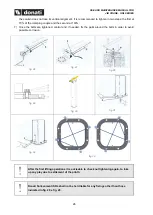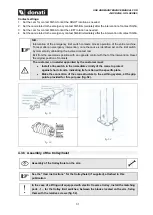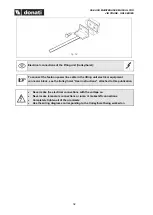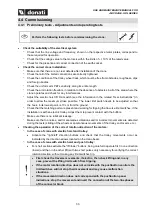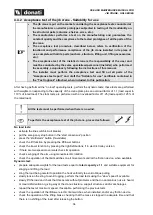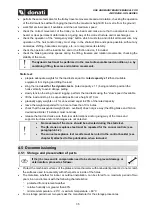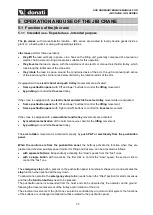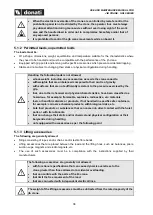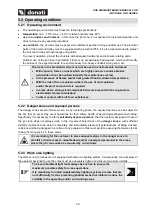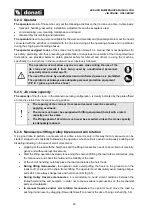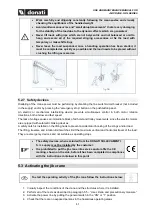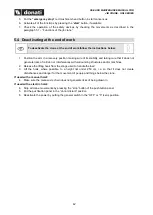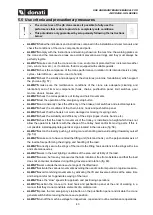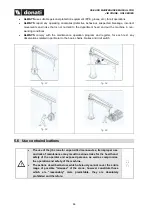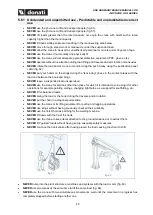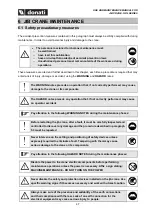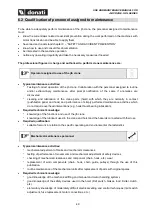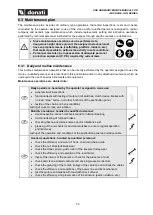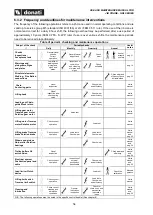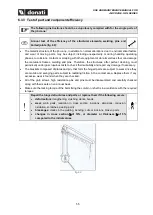
USE AND MAINTENANCE MANUAL FOR
JIB CRANE
-
GRL SERIES
40
5.2.4 Operator
The operators
are all of those who carry out the following activities on the jib crane on a time-to-time basis:
•
transport, handling, assembly, installation, adjustments and the acceptance test
•
commissioning, use, cleaning, maintenance and repair
•
disassembly, dismantling and demolition
The operators
need to be persons suitable for the work and mentally and physically able to meet the needs
connected with the activities correlated with the jib crane during all the operating phases and in particular
during the slinging and handling phases.
The operator assigned to use
of the cranes must position himself in a manner that is not dangerous for
his safety, predicting and thus preventing possible falls or dangerous movements of the transported load.
Instructions are provided below to obtain greater safety for himself and others in using the machine,
specifically the instructions in the manual must be scrupulously followed.
The operator must not allow anyone to come close during the use of the
jib crane and prevent it from being used by unauthorised personnel,
especially minors under age 16.
The use of the crane by unauthorised and uninformed persons is prohibited.
The operator must always use adequate personal protection equipment
(P.P.E. = gloves, protective shoes)
5.2.5 Jib crane capacity
The capacity
of the jib crane, in the planned operating configuration, is clearly indicated by the plate affixed
on it and is visible from the manoeuvring position.
•
The capacity of the crane or its accessories must never be exceed by
applying overloads.
•
The crane must never be equipped with lifting equipment (hoist) with a rated
capacity over the same.
•
The lifting speed of 24 m/min must never be exceeded, unless the crane capacity
is adequately reduced.
5.2.6 Manoeuvres: lifting, trolley traverse and arm rotation
It is a good idea to perform one movement at a time, since it is only in this way that a manoeuvre can be
started, stopped and constantly followed by the operator, who should also avoid continuously enabling and
disabling including in the case of small movements.
•
Gripping of the load with the hoist hook and the lifting accessories needs to be carried out carefully,
gently and without abrupt movements.
•
Start the lifting operation by slowly tensioning the chain until lifting the load a few centimetres, stop
the manoeuvre and check the hold and the stability of the load.
•
At the end of handling, carefully place the load and release the hoist hook,
•
During lifting manoeuvres,
the operator must avoid putting the hook on the ground or on the
loads to lift, to prevent the chain from shifting. The operator must absolutely avoid making oblique
pulls which are always dangerous and hard to control (fig. 55).
•
During trolley traverse manoeuvres
it is mandatory to avoid violent collisions between the
trolley/hoist and the end bumpers, in order not to cause serious repercussions on the mechanical
parts and metalwork.
•
In manual traverse and/or arm rotation manoeuvres
the operator must move the load by
pushing it and never by dragging it towards himself, to prevent the risk of being crushed (fig. 56).
Summary of Contents for GRL Series
Page 2: ......
Page 14: ...USE AND MAINTENANCE MANUAL FOR JIB CRANE GRL SERIES 10 Fixing systems for jib cranes ...
Page 64: ......

